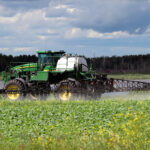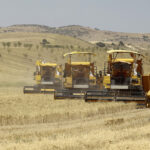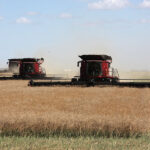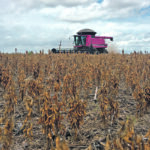The U.S. Department of Agriculture’s “massive” reduction in its South American soybean crop production estimate wasn’t drastic enough, according to analysts. And that bodes well for soybean and other oilseed prices. The USDA slashed its forecast for the region to 185 million tonnes in its February World Agricultural Supply and Demand Estimates (WASDE) report, down […] Read more
 Markets
Markets

Bayer gives glyphosate users a scare
It is uncertain what impact a manufacturing problem at Bayer will have on western Canadian supplies of glyphosate this spring. The world’s leading manufacturer of the key crop input sent out a letter to customers on Feb. 11 declaring a force majeure event. A major supplier of membrane caustic soda, a key ingredient in the […] Read more

Bayer says production of glyphosate may be curtailed
FRANKFURT, Feb 14 (Reuters) – Pesticide and seed producer Bayer said on Monday a supplier of an ingredient for its widely used herbicide glyphosate has run into technical problems which may hamper Bayer’s output of the product in the short term. The “mechanical failure” at Bayer’s supplier comes in addition to a tight supply situation […] Read more

Industry disagrees over Chinese demand for feed wheat
There is a sharp divide in China’s estimated feed wheat use for 2021-22. The U.S. Department of Agriculture is forecasting 36 million tonnes, which is in line with the U.S. Foreign Agricultural Service’s 35 million tonne estimate. But according to traders and analysts interviewed by Reuters, the volume could be far lower than that. They […] Read more

Drought hits large wheat-importing region
Algeria is experiencing ‘severe’ drought, while Morocco and Tunisia are dealing with widespread ‘extreme’ drought
Drought is threatening cereal crops in several North African countries, according to Gro Intelligence, a climate analytics platform. Much of Algeria is experiencing “severe” drought while “extreme” drought is widespread in Morocco and Tunisia. The analytics firm is forecasting an increase in grain imports to what is already the world’s largest wheat-importing region if the […] Read more
Drawing the curtain on Chinese tariffs
A senior USDA official takes a deep dive into how China manages its complicated wheat tariff rate quota program
China filled its wheat tariff rate quota last year for the first time since joining the World Trade Organization in 2001. The country bought 9.72 million tonnes of the crop, which is slightly above its TRQ of 9.64 million tonnes. Wheat imported under the TRQ is assessed a one percent tariff. Anything beyond that volume […] Read more
FCC projects producers will plant more canola this year
Farm Credit Canada believes strong global, domestic demand will prompt farmers to seed five percent more of the crop
Economists at Canada’s largest farm lender project a 4.8 percent increase in western Canadian canola acres in 2022 and a 3.1 percent increase in Canadian soybeans plantings. In its 2022 ag economic outlook held late last month, Farm Credit Canada said a continuation of strong global and domestic demand for oilseeds will likely translate into […] Read more
Pork sector hopes for better year
Labour shortages caused by the COVID-19 pandemic, high feed costs and lower prices posed constant threats to Canada’s hog industry in 2021. Nevertheless, pork appears to be in a good spot entering 2022, according to two analysts. “2021 was not the best, but not the worst,” said Tyler Fulton, director of risk management for Hams […] Read more

Putin not only factor affecting wheat market
The threat of Russia invading Ukraine supported wheat prices in recent weeks, but what happens to wheat’s value if Russia backs off? As I wrote this Feb. 4, Russian President Vladimir Putin was in China to view the opening of the Winter Olympics. I’ve heard analysts suggest there won’t be an invasion while the games […] Read more

Nothing transitory about inflation and supply chains
One word that’s gone way out of fashion for 2022 is “transitory.” That’s the term much-used early last year by many economists and central bankers in describing their outlook for inflation, which was rising as the world’s economies revived from the initial blow of the pandemic. It was also used to describe the supply chain […] Read more

 Markets
Markets


